Delicious Arabic Sweets Popular In The Middle East
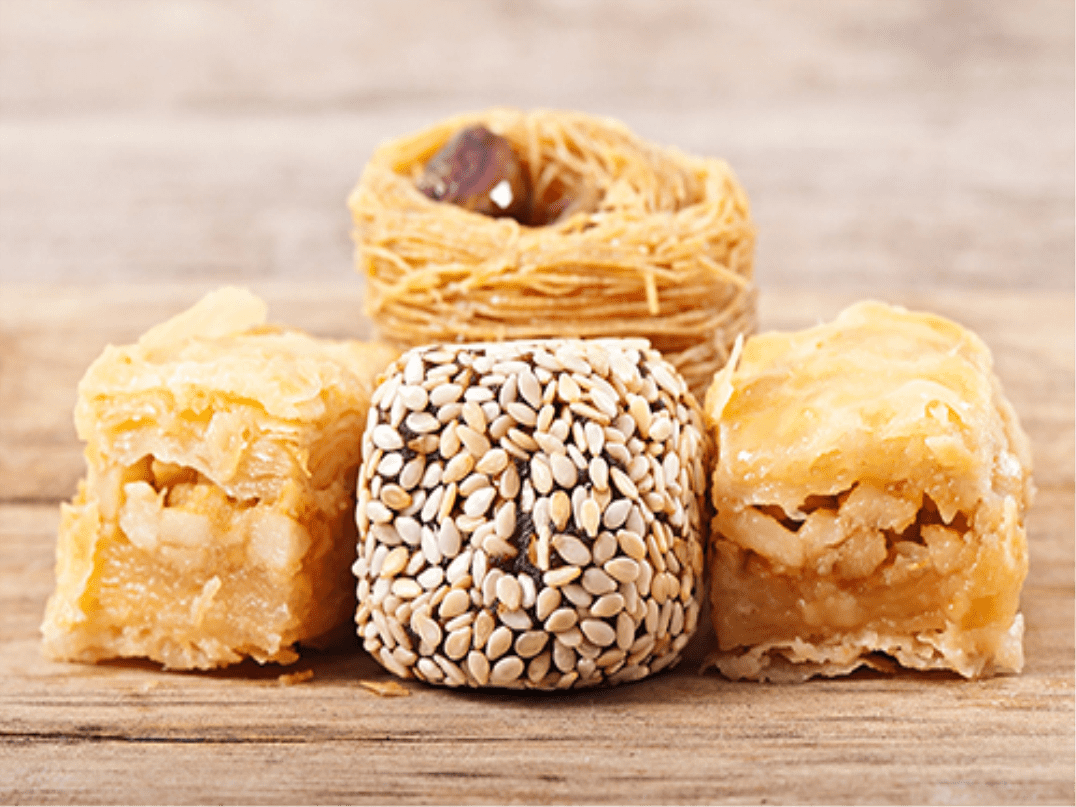

If you have a sweet tooth, then this article is right up your alley! The layered personality of Arab cuisine has various regional influences stemming from traditional Bedouin and Levantine food. However, the question that arises after every authentic feast is always, “What’s for dessert?” Just like their savory dishes, Middle Eastern desserts consist of multiple, perfectly-balanced flavors and textures. Some of them can be a bit sticky-sweet for Western tastes. However, they’re just as lovely to look at as they are to eat when they are made correctly. Unfortunately, too many people are familiar only with Middle Eastern pastries. Unfortunately, those are not made well if you sample them far away from where they originate. Sometimes, people use old or stale nuts. Or maybe the pastries sat around too long in plastic packages, or the cheeses aren’t exactly fresh.
We compiled a list of a few popular Middle Eastern desserts:
This is one of the region’s favorites. It is available in many Arabian restaurants and shops that specialize in making this tasty treat. The dish has a thick layer of white cheese, topped with crushed vermicelli noodles or shredded wheat. It’s best for you to eat it piping hot from the oven and soaked in a plain or rose-flavored sugar syrup.
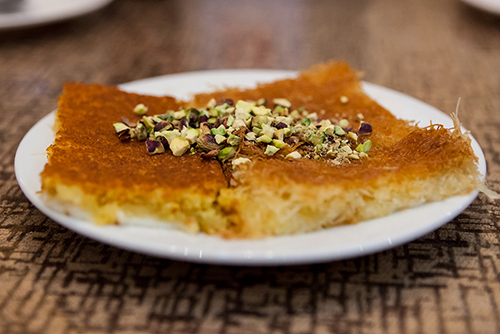
Some people might pronounce this word as kataifi, but that would be wrong as kataifi is a popular Greek dessert. Known by some as Arabic pancakes, they’re filled with cream and nuts and topped with syrup. Some might even bake them or fry them as an extra step. This dessert has not changed for centuries; however this hasn’t kept Nutella from spreading (pun intended) its influence as a filling inside them!
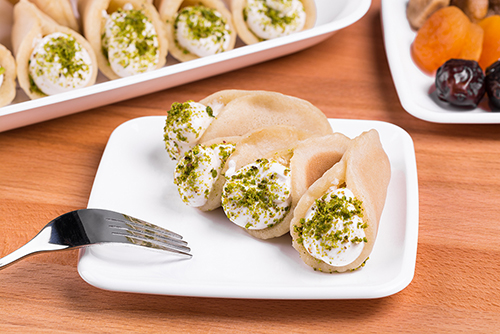
Perhaps one of the best-known desserts from the region, baklava takes on many delicious forms. Baklava originates in Turkey. This multi-faceted dessert contains layers of filo pastry. Then, people stuff it with an assortment of nuts and drenched in sticky, sweet honey.
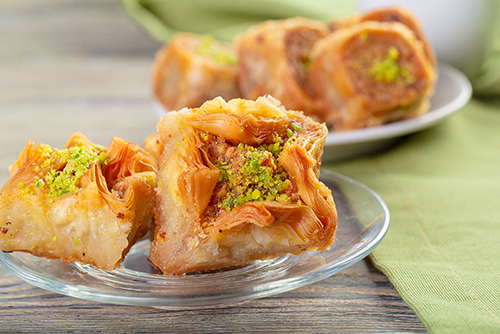
A traditional Levantine cake, basbousa is an everyday dessert. Families eat it commonly after family meals. Following a simple recipe, the cake is mostly made with semolina, and sometimes powdered coconut. Then, soaked in syrup and garnished with blanched almonds before serving. Mild-flavored and lightweight, it’s an easy dessert to both make and eat. Variations can include a honey glaze, the addition of either rose water or orange blossom water to give a soft floral scent. Some people include thick yogurt to create a moister – and denser – cake.
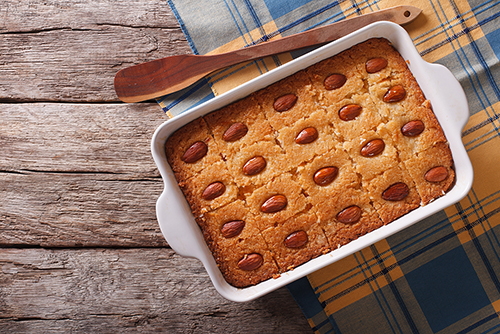
Flour, dates, spices and honey are essential ingredients of most sweets of Arabia and every grandmother has a secret recipe that’s been handed down through generations. Likewise, the spiced date cookies called maamoul are sure to be found in heaping piles in every majlis (a room specifically for hosting guests). They are usually stuffed with date paste and crushed nuts and pressed into decorative molds before baking. Their buttery flavor is the perfect foil to a cup of strong, black, Arabian coffee they’re usually served with.
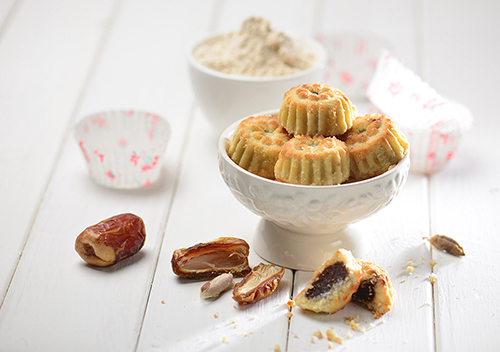
The people’s choice indulgence, halawet el jibn are rolls of semolina dough which people stuff with clotted cream. A bit of a flavor snooze until you cut them into bite-size pieces and top them with pistachios and a dollop of rose petal jam. Drizzle on a fragrant syrup, and thank Lebanon and Syria for this exotic concoction of yummy!
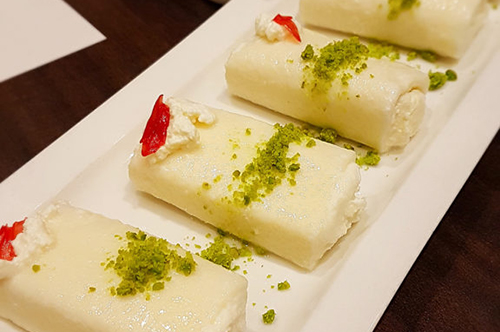
This is one of those Middle Eastern sweets that can be easily replicated anywhere, no matter where you are from. It is rich and dense, with the semolina crumbling on the tongue, yet chewy and sweet, as people choose to soak it in sticky flower syrup. The pan gets greased with tahini rather than butter, mellowing each bite.
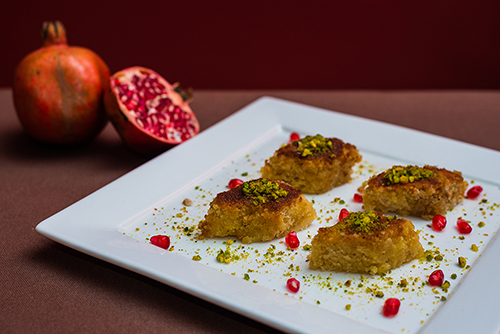
Translating to “Ali’s Mother”, Umm Ali is a core dessert of Eid celebrations and other holidays. People make this deliciously creamy, bread and butter pudding slightly differently than the kind eaten in the West, with puff pastry or torn-up croissant layered in a large dish with pistachios, dried coconut flakes, and sultanas or pieces of dates. Then, Arabs pour a mixture of milk, cream and sugar over the top. The pastry will soak the mix before baking it. That is to say, no celebration is complete without a bowl or two.
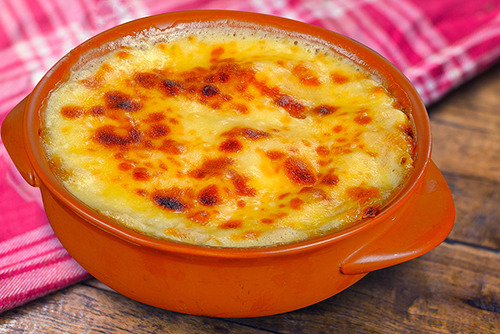
The Ottomans knew their way around snacks, inventing this granddaddy of the donut. Awama is a traditional Levant sweet. Basically, they are small, fried dough balls that you dip in syrup. The name is Arabic for “floater” because the dough pops to the surface when being fried. One ball of this Damascene dessert has about 180 calories!
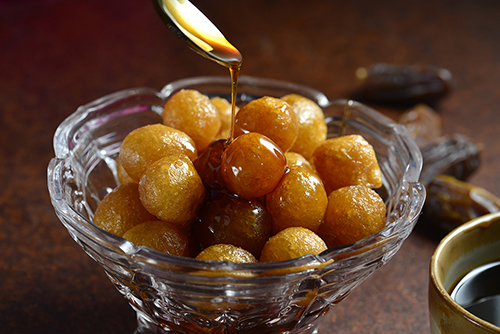
So, are you hungry yet? After compiling this list, we sure are! Arabic sweets have a habit of satisfying you like no other dessert out there, but be sure to check out our other articles at Kaleela.com after you finish eating. If you want to learn more about popular Arabic desserts or just Arabic food in general, don’t forget to download our Arabic learning app.